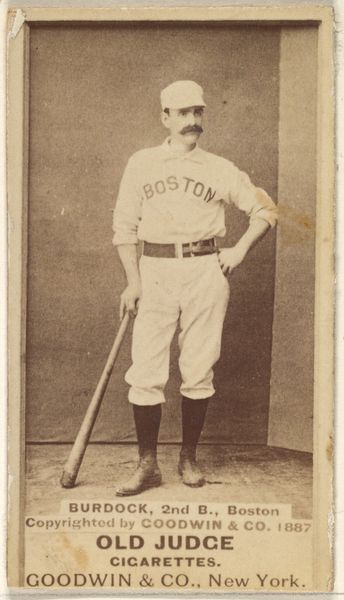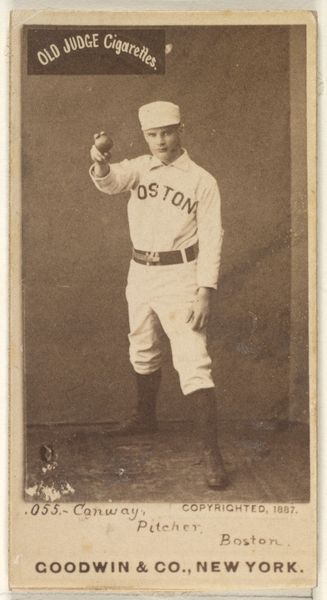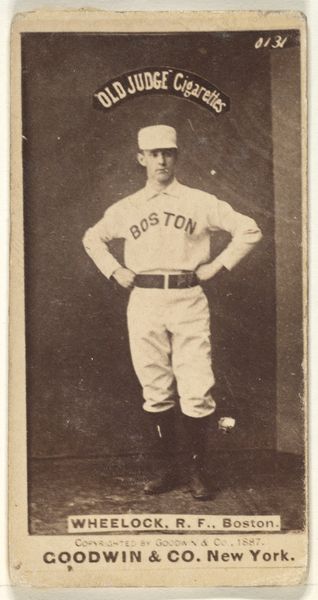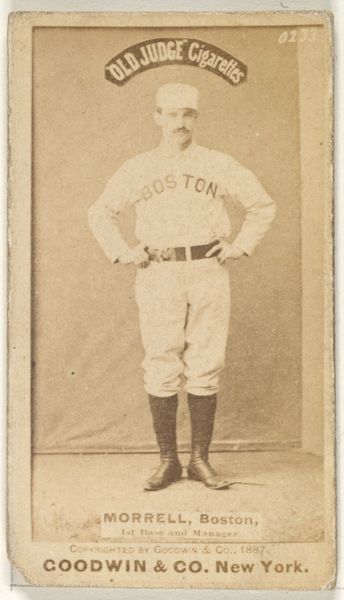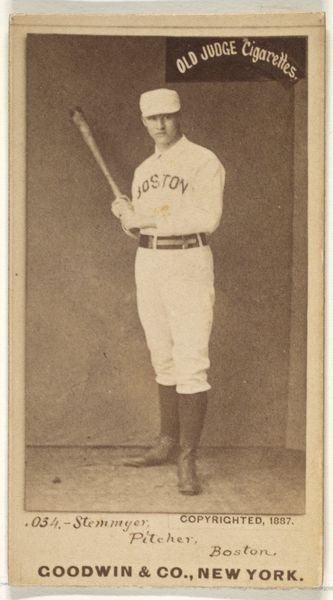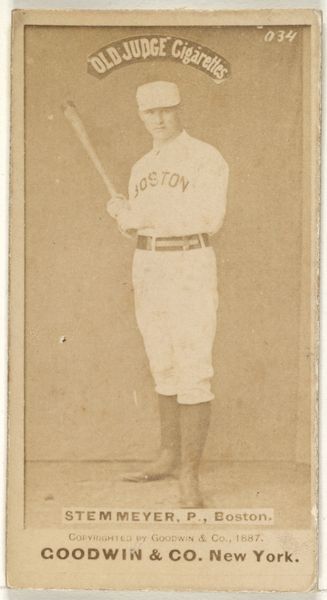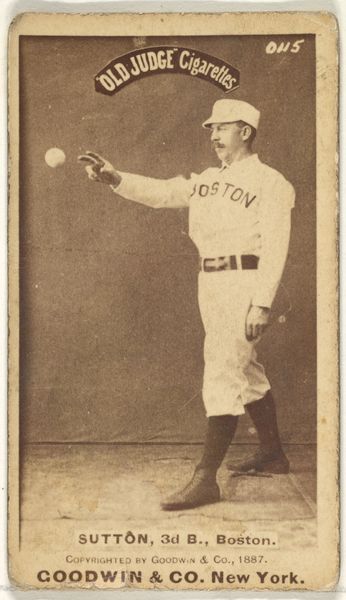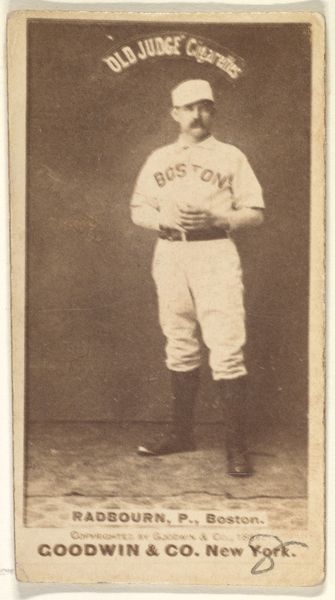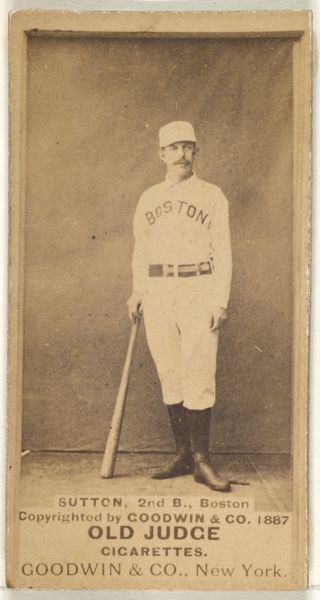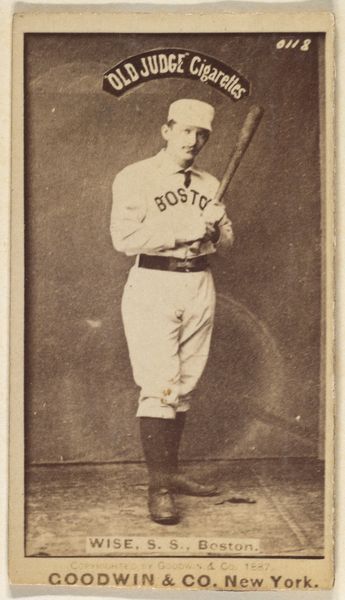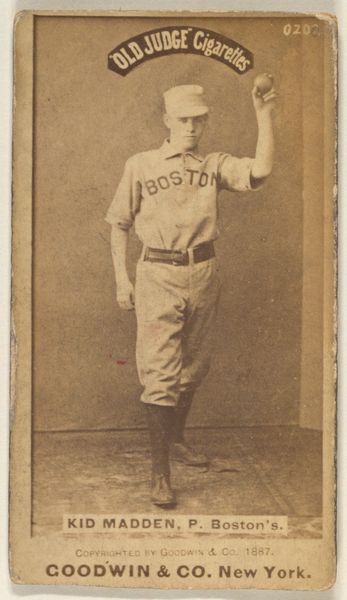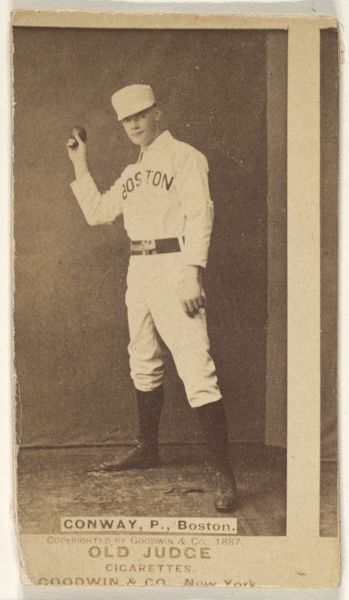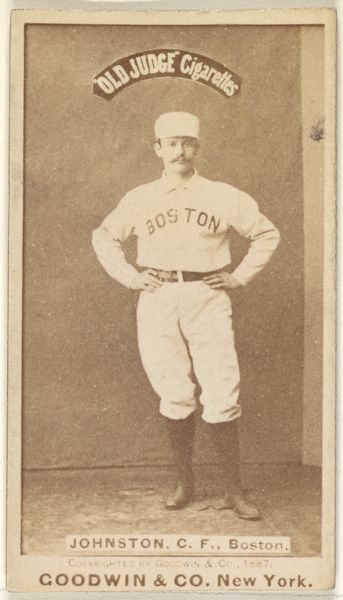
Stemmyer, Pitcher, Boston, from the Old Judge series (N172) for Old Judge Cigarettes 1887
0:00
0:00
print, photography
#
portrait
# print
#
impressionism
#
baseball
#
photography
#
men
#
athlete
Dimensions: sheet: 2 11/16 x 1 3/8 in. (6.9 x 3.5 cm)
Copyright: Public Domain
Editor: This is "Stemmyer, Pitcher, Boston," a baseball card from the Old Judge Cigarettes series made in 1887. It’s a photographic print, so it feels very immediate. I’m struck by the contrast between the clear portrait and the slightly worn edges of the card itself, almost as if time is chipping away at the image. How do you interpret this work? Curator: It’s more than just a portrait; it's a carefully constructed cultural artifact embedded in the late 19th-century societal landscape. Goodwin & Company weren't merely selling cigarettes. They were selling an aspirational lifestyle deeply intertwined with emergent American ideals of athleticism and mass culture. Consider the implications: baseball, a rapidly growing sport embraced by diverse urban populations, being used to market a product associated with vice. How does this confluence reflect the era's anxieties and ambitions? Editor: That's fascinating. I hadn't thought about the tensions involved in advertising tobacco using baseball. So it's about constructing an image of masculinity, maybe? Curator: Exactly. We see a young, healthy, presumably white athlete, representing Boston. But who is being excluded from this picture, both literally and figuratively? This portrait, therefore, isn’t just about sport. It's about class, race, and the construction of an exclusive, national identity, cleverly marketed via cheap tobacco. How can we read it today in terms of these still resonant issues of representation and power? Editor: It’s eye-opening to see how a seemingly simple baseball card can unpack so many layers of social and political meaning. I’ll definitely look at such pieces differently from now on. Curator: Precisely. And that shift in perspective – questioning what’s presented and unearthing the unspoken narratives – is key to truly understanding art's role in shaping our understanding of the world.
Comments
No comments
Be the first to comment and join the conversation on the ultimate creative platform.

